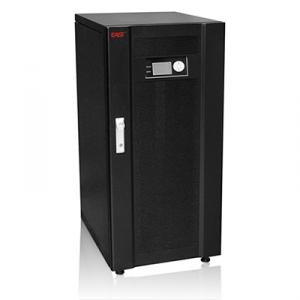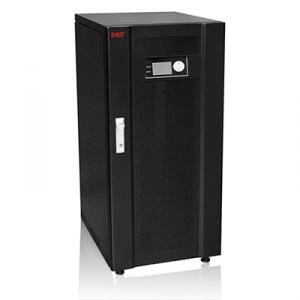High Power MPPT Solar Charge Controller Off-grid Solar Power Systems
- Loading Port:
- China main port
- Payment Terms:
- TT or LC
- Min Order Qty:
- 1 pc
- Supply Capability:
- 1000 pc/month
OKorder Service Pledge
OKorder Financial Service
You Might Also Like
| High Power MPPT Solar Charge Controller |
GSC Series modular MPPT solar controller unit is a complete solar energy conversion, tracking, protection combined systems, this series product is developed depending on the needs of green power by EAST company. The solar energy collected by the PV panel is transferred into stable DC power output, advanced Maximum Power Point Tracking Technology (MPPT)and intelligent battery management system,intelligent monitoring system can be connected to PC by RS232/USB/RS485,remote monitoring by SNMP. Suitable for a variety of off-grid solar power systems. |
Efficient and stable,maximize the output power
● High power modular design,can parallel 8 pcs,maintenance is simple and fast, efficient and reliable system for easy expansion.
● High speed DSP the core control system and MPPT Maximum Power Point Tracking Technology,ensuring maximum output power of the system, improving the power generation efficiency of photovoltaic panels.
● Advanced multi-level control technology, switching losses smaller, more efficient.
● Professional cooling duct design, effectively discharge machine heat, to ensure stable operation of the controller
● Multiple input for the system, suitable for a variety of applications, roof, slope system.
Perfect protection design, safe and reliable
● Foolproof design is used in the system,ensure modules hot-swappable safety, providing safety operating for modules.
● PV input/output over/under voltage、PV reverse 、output anti-anti-irrigation、over temperature and other protections.
Smart battery management system
● Best charging mode can be used depending on battery type and capacity, to extend battery life.
● Over charging and over discharging protections.
Unattended and intelligent monitoring:
● After battery low voltage and automatically shut down, PV comes back,system will auto restart and charge the battery.
● RS232、USB and RS485 bus interface are available, real-time monitoring, testing can be done by communicating with PC,
SNMP(optional)net system is also available for remote real-time monitoring.
Model | GSC110-240 | GSC336-384 |
PV Input Range | 1-8 | |
Single Max Input Power | 0-500Vdc | 0-750Vdc |
Battery Numbers | 7KW-17KW | 24KW-27.5KW |
Max Charging Current | 55-120pcs can be set(2V per pcs) | 165-192pcs can be set(2V per pcs) |
Max Charging Current | 60A/120A/180A/240A/300A/360A/420A/480A | |
Equalizing Charging Voltage | (each one 2.4V)±1% | |
Float Charging Voltage | (each one 2.3V)±1% | |
Temperature Compensation | The voltage increases 2mV while temperature decrease 1℃ | |
Shared Parameters | ||
Max Efficiency | > 98% | |
Static Losses | < 5% (system rated current) | |
MPPT Accuracy | 0.99 | |
Dynamic Response | 25%-50%-25% or 50%-75%-50% load change 3ms | |
Display | LCD + LED | |
Cooling | Forced ventilation (fan speed changes with load) | |
Noise | ≤60dB | |
Protection | PV reverse、BUS over voltage、output over voltage、output reverse、 | |
PV over / under voltage | ||
Communication | RS232 / RS485 / SNMP card(optional) | |
IP Level | IP20 | |
Operating Temperature | From -20℃ to +45℃ | |
Humidity | 0-95% (non-condensing) | |
Storage Temperature | From -25℃ to +85℃ | |
Attitude | 1000m with rated power (increase 100m, reduce power 1%) Max.4000m | |
Dimensions (WxDxH mm) | 500x620x1050 | |
Packing Dimensions (WxDxH mm) | 585x710x1110 | |
Weight(kg) | Frame: 80kg ; MPPT power module: 5kg/unit | |
· Q. What is an UPS and What it is for ?
An uninterruptible power supply (UPS) is a device that allows your computer or telephone switch or critical equipement to keep running for at least a short time or longer time when the primary power source is lost. It also provides protection from power surges, spikes, brownouts, interference and other unwanted problems on the supported equipment.
· Q. How long the UPS to run when power goes?
This can take 3 paths.
1.You can pick a UPS that is rated for pretty much the full VA you need so it will be running at 100% of capability and will thus last 'n' minutes.
2.You can pick a UPS that is rated at a much higher VA value than you really need so, for example, is running at 50% of capability and will thus last for longer than the UPS from option 1.
3.You can use extra external battery packs to run for longer. If charging capability allows, the more and the bigger batteries you take with, the longer time UPS runs.
or using a generator after about 6 hours, it will be more cost-effective, with a short runtime UPS to bridge the generator start-up gap.
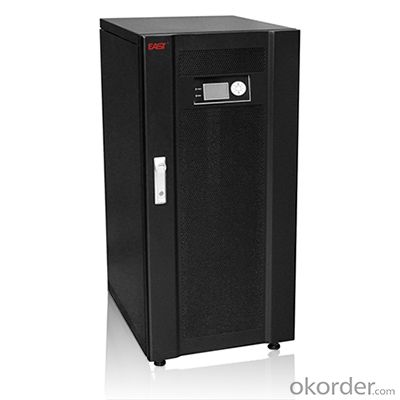
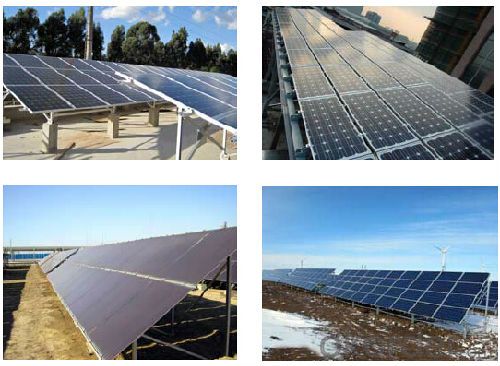
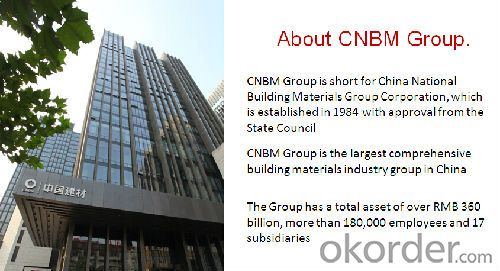
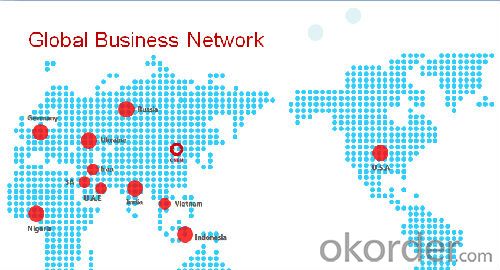
- Q:What is the role of a solar inverter in power factor correction?
- The role of a solar inverter in power factor correction is to adjust the power factor of the solar power system to ensure efficient energy conversion. It helps in balancing the reactive power and real power, leading to improved overall power quality and reduced system losses.
- Q:After the PV inverter, how to achieve the same period before the network?
- Solar panel simulator: with MPPT function, simulated morning, noon, afternoon, evening, rainy weather, solar panels produced under different conditions in different voltages.
- Q:What is the purpose of a solar inverter?
- The purpose of a solar inverter is to convert the direct current (DC) electricity generated by solar panels into alternating current (AC) electricity that can be used to power household appliances or be fed back into the electrical grid.
- Q:How do you connect solar panels to a solar inverter?
- To connect solar panels to a solar inverter, you need to follow these steps: 1. Locate the positive (+) and negative (-) terminals on the solar panels. 2. Connect the positive terminal of the first solar panel to the positive terminal of the second panel using a solar PV cable or connector. Repeat this process for other panels if necessary. 3. Connect the negative terminal of the first panel to the negative terminal of the second panel using the same method as above. 4. Once all panels are connected in series or parallel, connect the positive terminal of the last panel to the positive terminal of the solar inverter. 5. Finally, connect the negative terminal of the last panel to the negative terminal of the solar inverter. It's important to ensure that the connections are secure and tightened properly to prevent any loose connections. Following the manufacturer's instructions and consulting a professional electrician or solar installer is recommended for a safe and efficient installation.
- Q:What is the role of a communication interface in a solar inverter?
- The role of a communication interface in a solar inverter is to facilitate the exchange of information and data between the inverter and other devices or systems. It allows for monitoring, control, and communication with the solar inverter, enabling real-time performance monitoring, remote management, and integration with other renewable energy systems or smart grid networks.
- Q:Can a solar inverter be used with a solar-powered water heating system?
- Yes, a solar inverter can be used with a solar-powered water heating system. The solar inverter converts the direct current (DC) generated by the solar panels into alternating current (AC) that can be used to power the water heating system. This allows for efficient utilization of solar energy and ensures the water heating system operates effectively.
- Q:What is the role of transformerless design in a solar inverter?
- The role of transformerless design in a solar inverter is to eliminate the need for a bulky and heavy transformer, resulting in a smaller, lighter, and more efficient inverter. By removing the transformer, the design reduces energy losses, improves power conversion efficiency, and lowers manufacturing and installation costs. Additionally, transformerless inverters allow for increased flexibility in system design and make it easier to integrate with other renewable energy sources and smart grid technology.
- Q:Can a solar inverter be used with a solar-powered pool heating system?
- Yes, a solar inverter can be used with a solar-powered pool heating system. The solar inverter is responsible for converting the direct current (DC) electricity generated by the solar panels into alternating current (AC) electricity that can be used to power the pool heating system. By connecting the solar inverter to the solar panels and the pool heating system, the solar energy can be efficiently harnessed and utilized to heat the pool.
- Q:What is the role of frequency support in a solar inverter?
- The role of frequency support in a solar inverter is to ensure that the output frequency of the inverter aligns with the grid frequency. It helps in maintaining grid stability by continuously monitoring the grid frequency and adjusting the solar inverter's output accordingly. This support is crucial in preventing frequency deviations and potential disruptions to the grid, ensuring proper integration of solar energy into the electrical system.
- Q:Photovoltaic grid-connected inverter problem
- The first zero line is the AC output. Any AC output of the inverter will have zero line, whether it is isolated or non-isolated. Isolation is the safety of high voltage inverters and regulators. 50KW above the inverter almost with the transformer.
1. Manufacturer Overview |
|
|---|---|
| Location | |
| Year Established | |
| Annual Output Value | |
| Main Markets | |
| Company Certifications | |
2. Manufacturer Certificates |
|
|---|---|
| a) Certification Name | |
| Range | |
| Reference | |
| Validity Period | |
3. Manufacturer Capability |
|
|---|---|
| a)Trade Capacity | |
| Nearest Port | |
| Export Percentage | |
| No.of Employees in Trade Department | |
| Language Spoken: | |
| b)Factory Information | |
| Factory Size: | |
| No. of Production Lines | |
| Contract Manufacturing | |
| Product Price Range | |
Send your message to us
High Power MPPT Solar Charge Controller Off-grid Solar Power Systems
- Loading Port:
- China main port
- Payment Terms:
- TT or LC
- Min Order Qty:
- 1 pc
- Supply Capability:
- 1000 pc/month
OKorder Service Pledge
OKorder Financial Service
Similar products
New products
Hot products
Hot Searches
Related keywords
